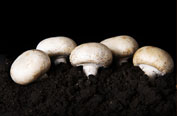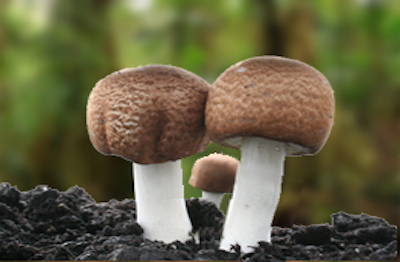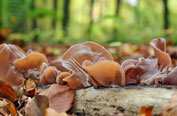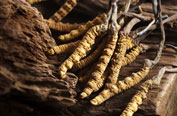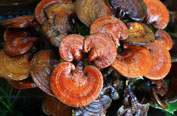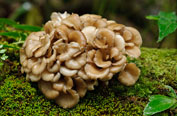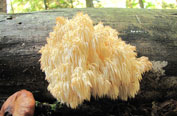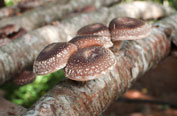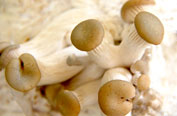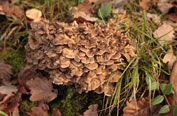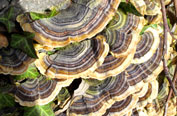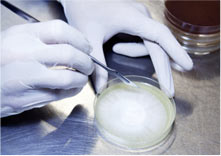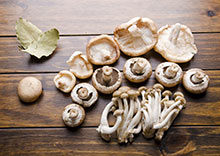
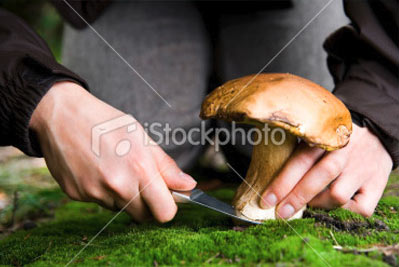
Mushroom cultivation on a bale of straw
(Level 1 – beginner)
Several mushroom species are straw-inhabitants. You can use wheat-, rye- or barley straw. One of the most successful ways for these species is the cultivation on bales of straw in the garden.
Only use dry and high-quality bales of straw, because the quality of the fruiting substrate always has a major influence on the crop yield. The colour of the straw (golden yellow) and the almost tear-proof blades indicate the health of the straw. Furthermore, the straw should smell fresh, if it doesn't, don't use it, a musty smell either comes from mold or other fungi which are already populating the bale. Musty bales are not suitable for mushroom cultivation!
Recommended equipment:
Bale of straw (27cm x 20cm x 40cm)
Tub for soaking
Grain or wood spawn (completely colonised)
Jute hessian cloth (200 x 100 cm)
String/rope (2 m)
Water
Preparations
Soak the bale in water overnight (12 -16 h) before inoculation. Take care that the whole bale is underwater. Immediately before inoculation, take the bale out of the water and let drain the spare water for half an hour.
Inoculation
Please wash your hands and arms thoroughly before you touch the spawn. For one bale of straw (27 cm x 20 cm x 40 cm) we recommend using 1 litre of spawn. To assure a consistent population, form one 5-10 cm (2–4 inch) deep hole on each side. Use a clean stick to drill the holes. Divide the 1 litre spawn evenly on the 6 holes.
To keep the spawn in the bale and ensure that it grows through it, close the inoculated holes with straw from the outside. Now wrap the bale in the jute fleece and tie the string around it.

Mycelium growth - spawn run
For spawn run store the bale in a shady place in the garden. Depending on the species, temperature and humidity, it will take 2 – 4 weeks until the bale is fully colonised with mycelium.
Control the humidity in the bale periodically. Humidify the bale again, if more than 3 cm of the outmost layer are dry. Please apply only small doses of water, because the spawn could die by suffocationif the bale gets too wet. Depending on the weather, it will be sufficient to use 2–3 L per bale 1 to 3 times a week. Check the humidity inside the bales with your clean hand. Do this on a regular basis and adjust it with only small amounts of water to prevent the spawn from drowning.
Fruiting
As soon as the bale is completely colonised, you can initiate the fruiting by increased air supply. Just remove the jute fleece on one broad side of the bale. If the weather conditions are right, the first pinheads should show up after 2-4 weeks.
The mycelium will fruit in several flushes until all the nutrients in the bale have been consumed. Afterwards you can still use the bale for composting. At each flush, take care to harvest all the fruiting bodies, even the smaller ones. Please check the humidity in the bales during the harvest periods and also adjust the humidity if necessary.
Fighting snails
Snails love mushrooms! To prevent these voracious creatures from destroying the whole crop, we recommend building a snail fence around the bale. Don’t use slug and snail bait or other chemical pest control substances, the poison might end up in the fruiting bodies!
References:
„Mycelium running/ How mushrooms can help save the world“, Paul Stamets; Ten Speed Press, Berkeley/Toronto;
„The Mushroom Cultivator: A Practical Guide to Growing Mushrooms at Home", Paul Stamets, Agarikon Press; First Edition (December 1983);
„Growing Gourmet and Medicinal Mushrooms”, Paul Stamets, Ten Speed Press, Berkeley/Toronto;

